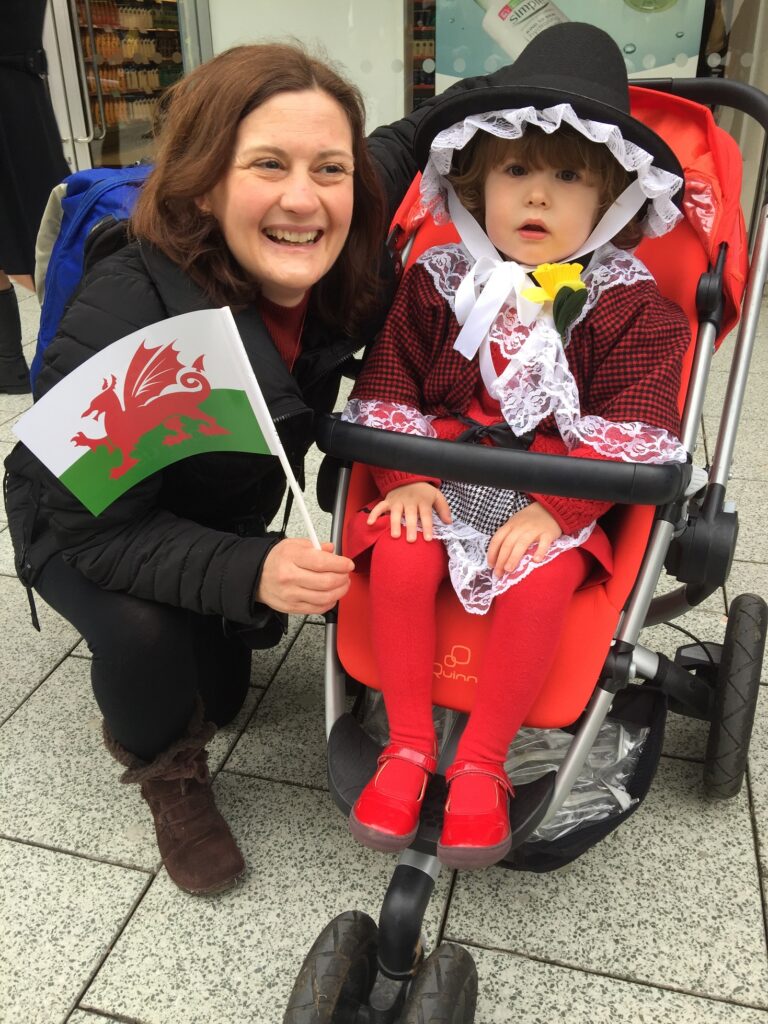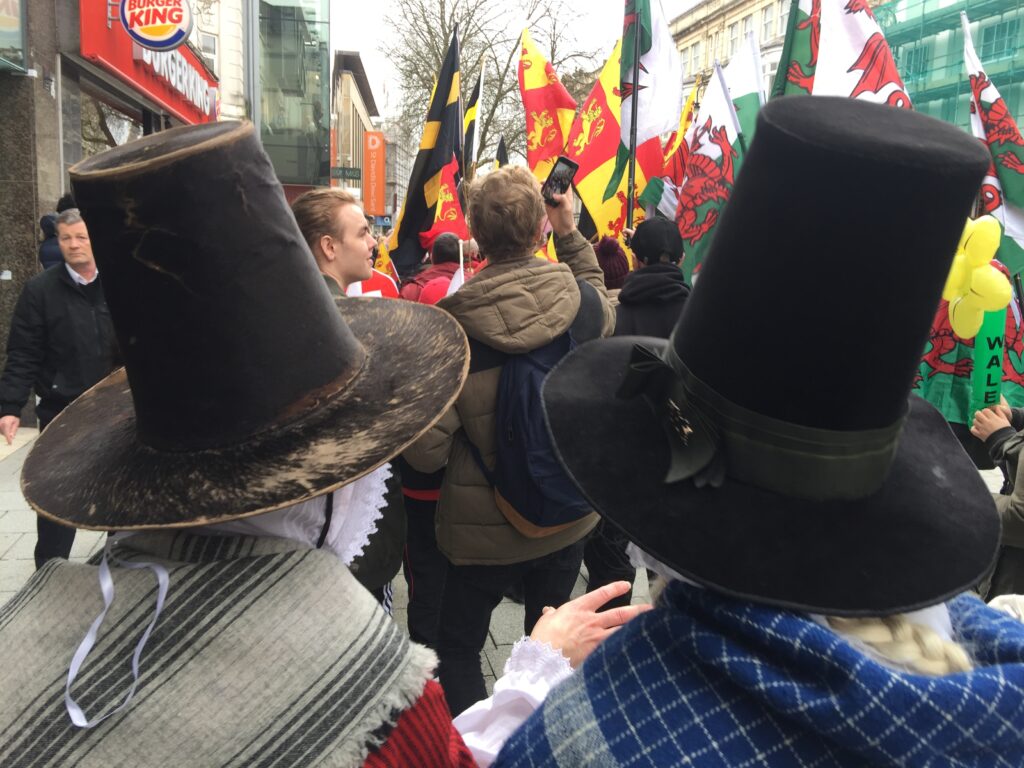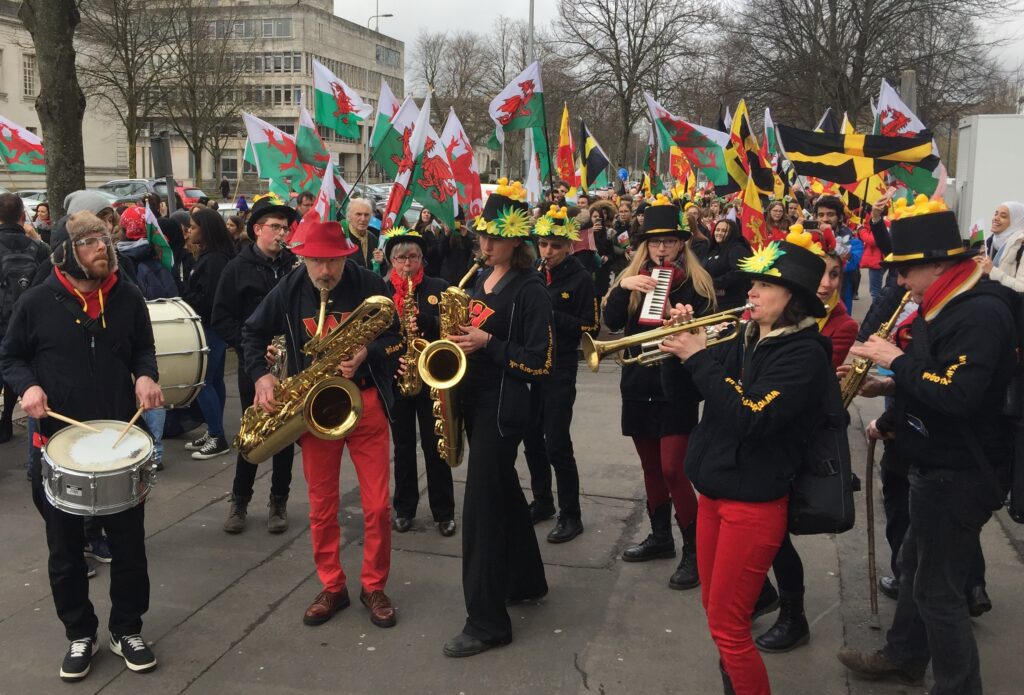St David’s Day

CELEBRATIONS are held across Wales on the first day of March each year as the nation marks the life of its very own patron saint.
Saint David’s Day is the feast day of Saint David, the patron saint of Wales, and falls on March 1st, the date of Saint David’s death in 589 AD. The feast has been regularly celebrated since the canonisation of David in the 12th Century, by Pope Callixtus II, though it is not a public holiday in the UK.
Festivities include the sporting of daffodils and leeks, recognised symbols of Wales and Saint David respectively, and both children and adults wearing traditional Welsh dress.
The flag of Saint David often plays a central role in the celebrations and can be seen flying throughout Wales. Popular dishes traditionally eaten on Saint David’s Day include cawl (soup), bara brith tea loaf, Welsh Cakes, Welsh lamb and Welsh rarebit.





Saint David was born in Caerfai, south west Wales into an aristocratic family. He was reportedly a scion of the royal house of Ceredigion, and founded a Celtic monastic community at Glyn Rhosyn (The Vale of Roses) on the western headland of Pembrokeshire at the spot where St David’s Cathedral stands today.
The 17th-Century diarist Samuel Pepys noted how Welsh celebrations in London for Saint David’s Day would spark wider counter-celebrations amongst their English neighbours: life-sized effigies of Welshmen were symbolically lynched, and by the 18th Century the custom had arisen of confectioners producing “taffies” – gingerbread figures baked in the shape of a Welshman riding a goat – on Saint David’s Day.
Children in Wales take part in school concerts or eisteddfodau, with recitation and singing being the main activities. The younger girls, in particular, sometimes wear traditional Welsh costumes to school. This costume consists of a long woollen skirt, apron, white blouse, woollen shawl and a Welsh hat. In the past, schools have taken a half-day holiday, which continues in some parts of Wales. A petition in 2007 to make Saint David’s Day a bank holiday was rejected by the office of the British Prime Minister Tony Blair.
An increasing number of cities and towns across Wales including Cardiff, Swansea and Aberystwyth also put on parades. Concerts are held in pubs, clubs, and other venues. In the town of Colwyn Bay in north Wales, an annual parade through the centre of town is held with several hundred citizens and schoolchildren taking part.
Swansea inaugurated a St David’s Week festival in 2009 with a range of musical, sporting and cultural events held throughout the city to mark the national day.
Across the Bristol Channel in France, Disneyland Paris organises yearly events to celebrate Saint David’s Day which include a Welsh-themed week, fireworks, parades and Disney characters dressed in traditional Welsh attire.
Washington DC holds a St David’s Day congressional reception at the United States Capitol in honour of the First Minister of Wales’ biannual visits.
The Los Angeles St David’s Day Festival – National Day of Wales is the largest annual event of its kind in the United States, encompassing an eisteddfod, Celtic marketplace, classes, and a concert.
To mark Saint David’s Day, and their return from a six-month tour of Afghanistan, soldiers from the Royal Welsh Regiment provided the Changing of the Guard ceremony at Cardiff Castle’s south gate on February 27 and 28, 2010.
Various Welsh Regiments of the British Army use aspects of Saint David’s cross, Saint David himself, or songs of Saint David in their formalities during the celebrations.
The wearing of the leek for St David’s Day is said to have arisen from an occasion when a troop of Welsh were able to distinguish each other from a troop of English enemy, dressed in similar fashion, by attaching leeks to their hats.
Photographs copyright of ewegottalove.com. May be reproduced with appropriate credit.
BACK TO HOME PAGE